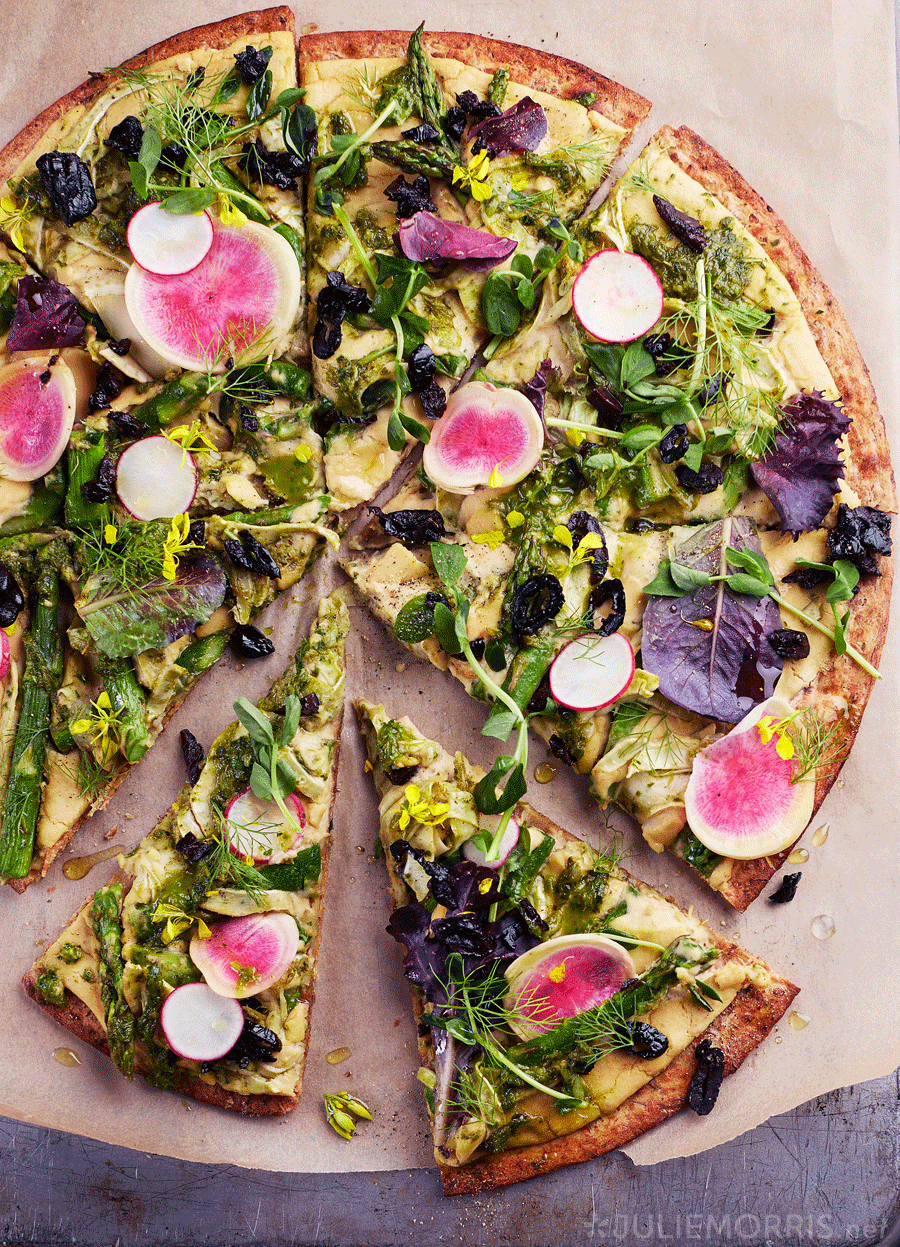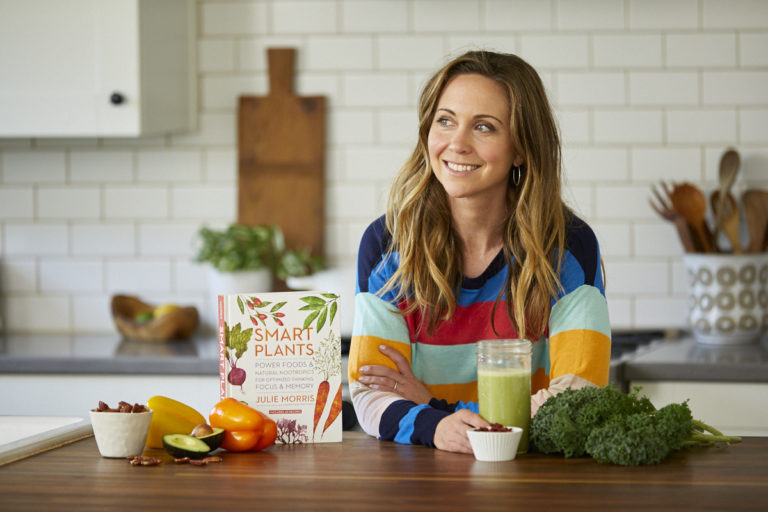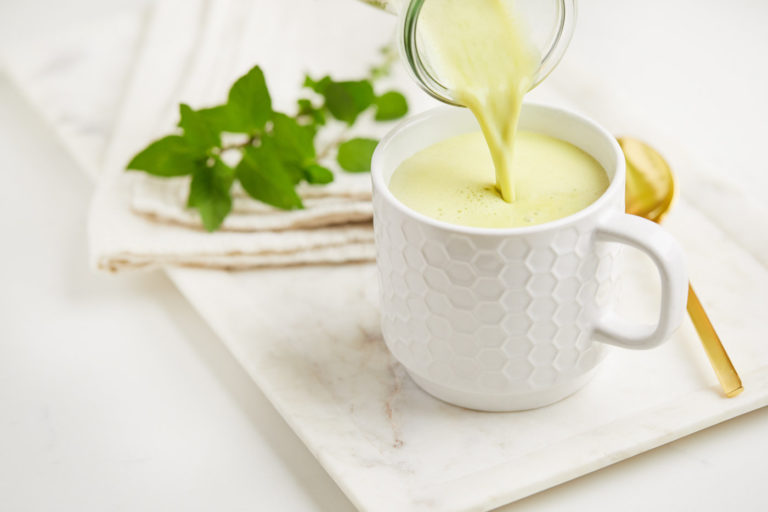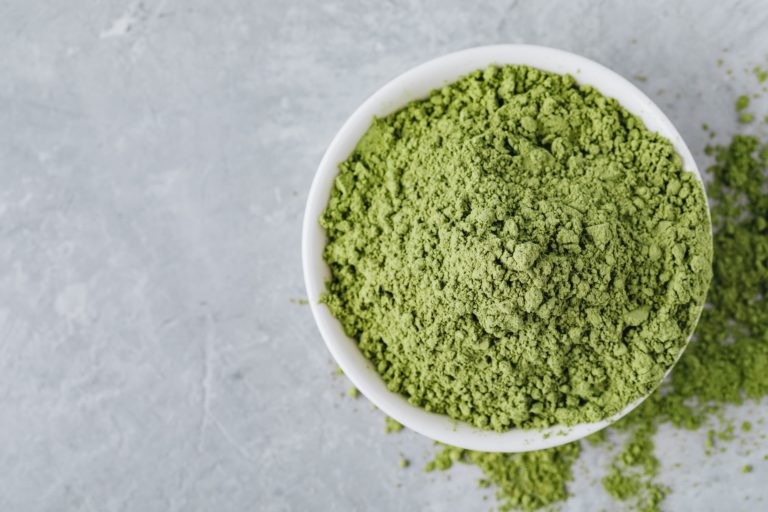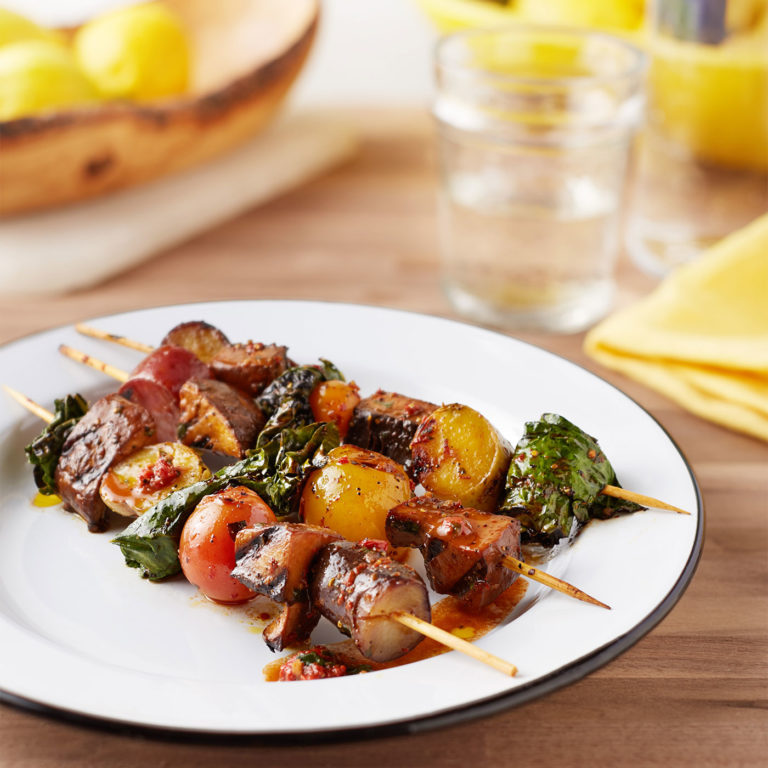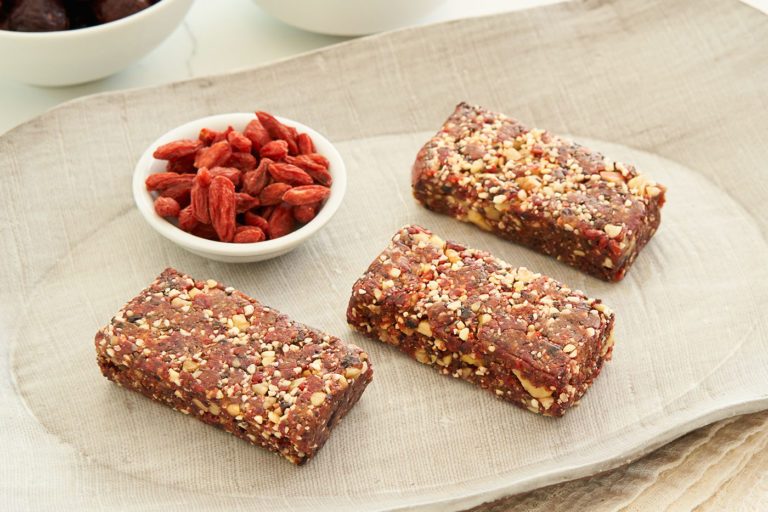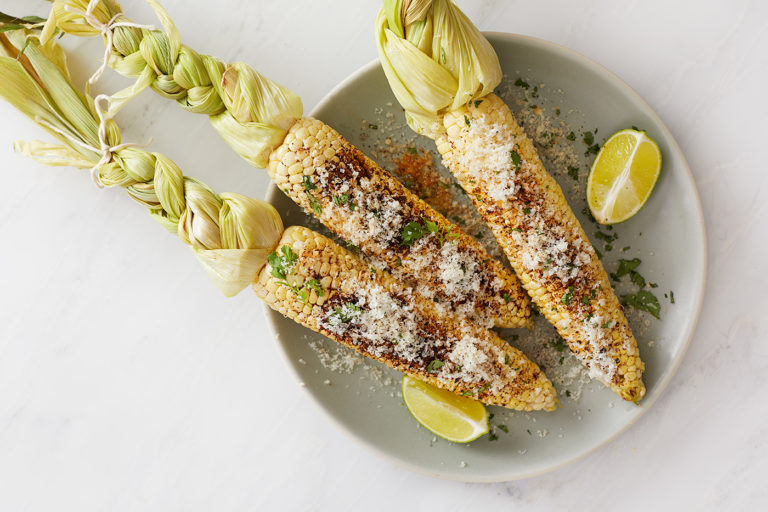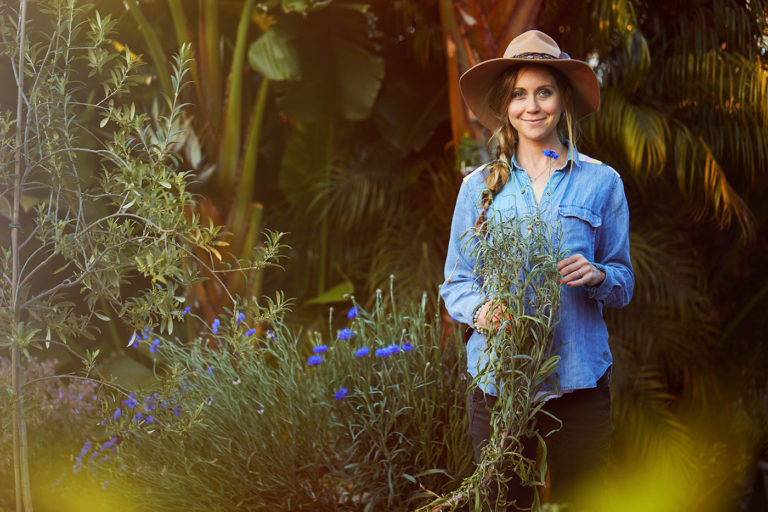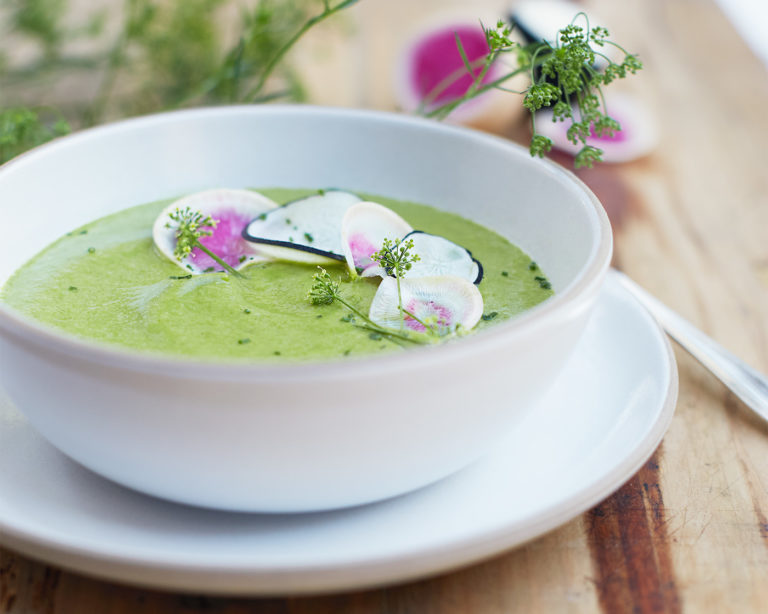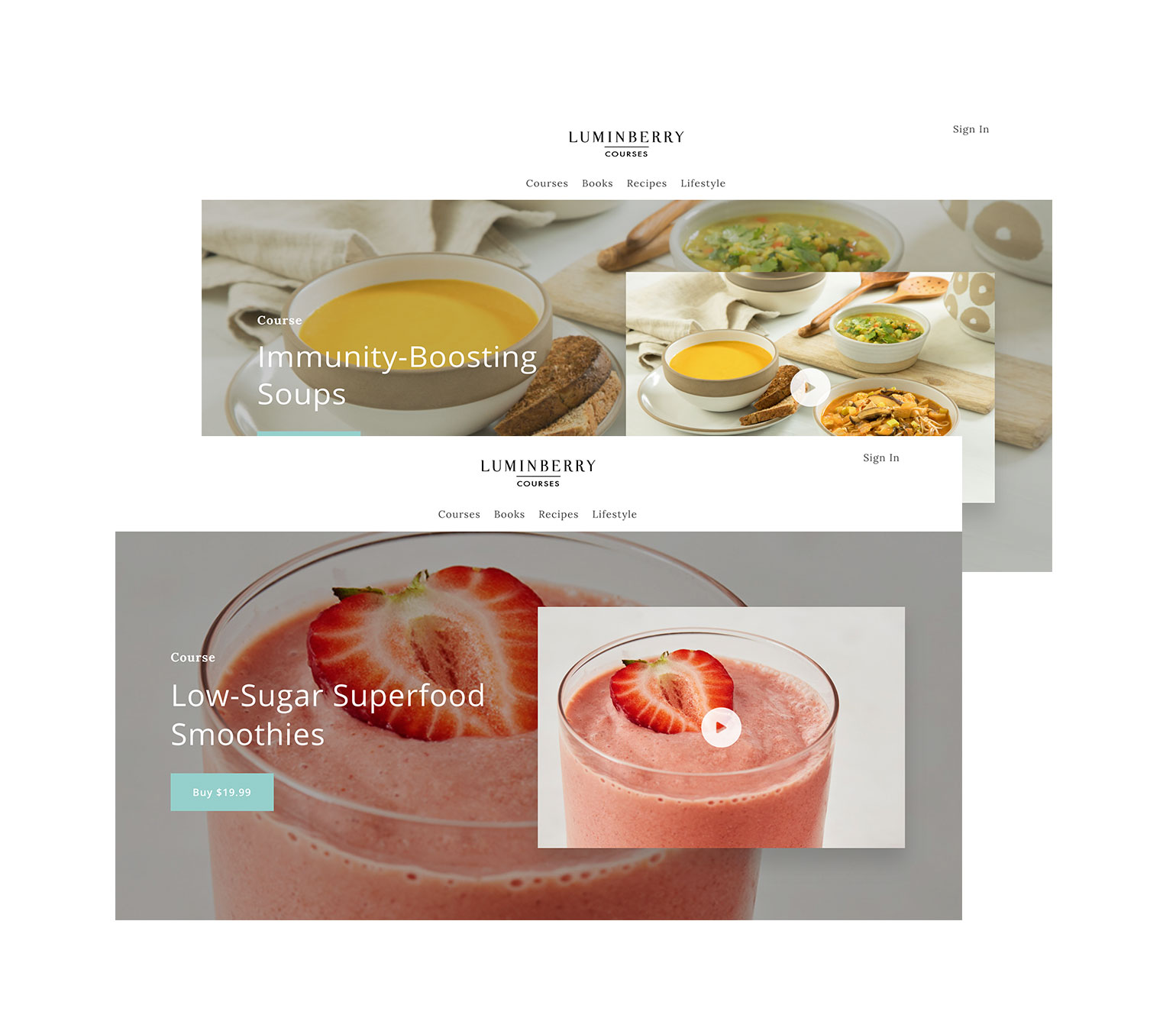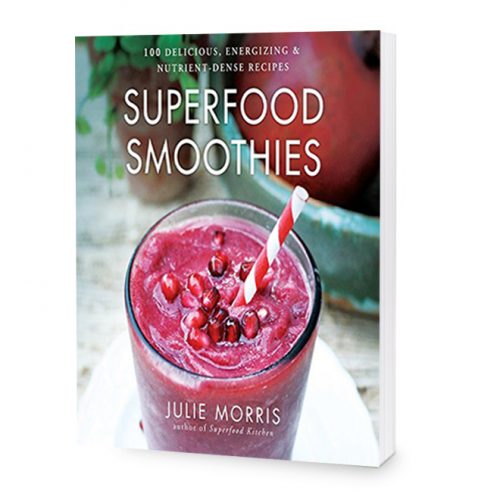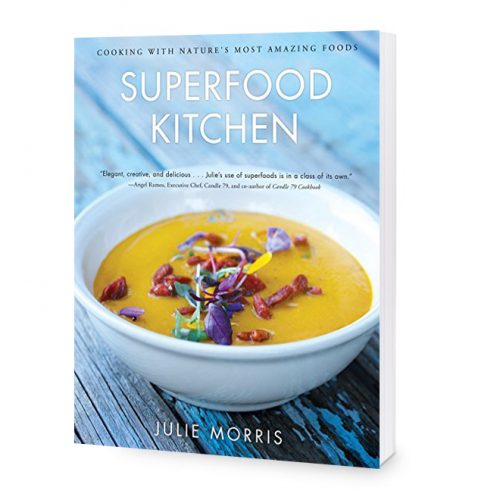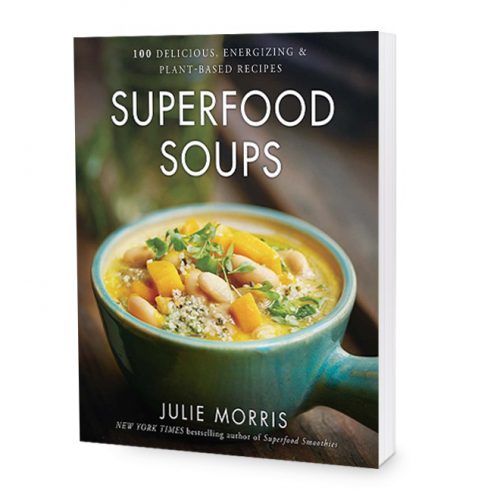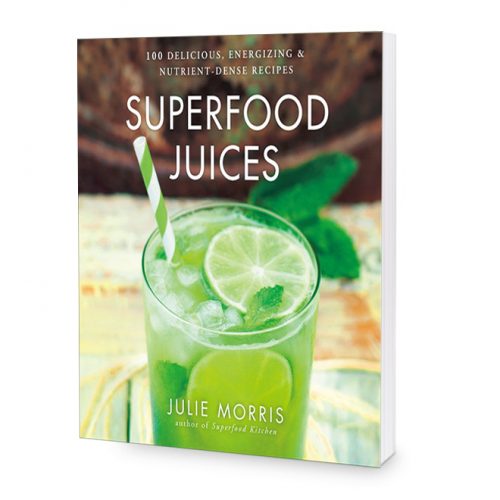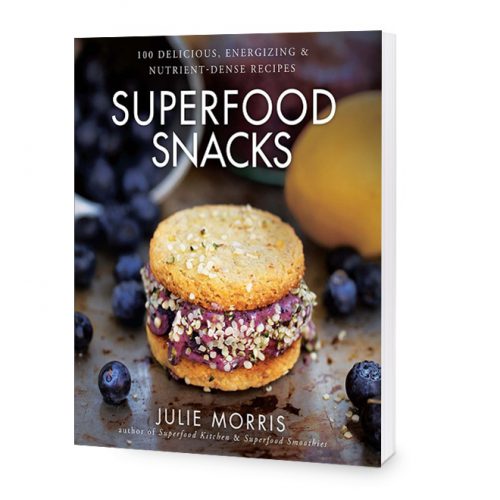Pizza is like a smile – everyone recognizes it as a good thing. But long gone are the times of pepperoni and margarita being the only options – these days when it comes to pizza, pretty much anything goes.
In my option, pizza is just another excuse to get in some fun, hyper-seasonal veggies. When I’m at the farmer’s market and pick up the bag of luscious morels, or some delicate purple kale sprouts (that I mostly bought because I liked the way they looked), pizza always seems like a great place to show them off. Or maybe it’s the other way around, and I’m just looking for an excuse to have more pizza in my life? Well, regardless…
I just finished up a project for a springtime pizza, and it turned out so well I wanted to share the recipe with you. It admittedly is more of a pizza in terms of architecture rather than technicalities: a flatbread-style base (although you can use anything you like as a crust — including my recipe for a deliciously crispy crust made from cauliflower in this month’s issue of Vegetarian Times that the magazine declared the “best-ever cauliflower pizza crust”), a creamy white bean sauce, roasted spring vegetables, and topped with a herby green sauce and garden of fresh toppings. Every bite tastes like the essence of spring — what better way to celebrate the season?
Springtime Pizza
Take advantage of spring’s fresh new offerings and supportive nutrition in the form of chlorophyll-rich herbs and antiallergenic foods like garlic and camu. Though it may look light, this flatbread-like pizza is surprisingly filling, thanks to high fiber from the toppings, protein from the white bean puree, and healthy fats from olive oil, tahini, and chia.
Makes 1 12-inch pizza
For the white bean puree:
1½ cup cooked cannellini beans (or 1 15-ounce can, drained)
1 clove garlic, thinly sliced
1 tablespoon tahini
1 tablespoon olive oil
2 tablespoon nutritional yeast
¼ teaspoon sea salt
1 teaspoon apple cider vinegar
¼ cup unsweetened almond milk
For the green sauce:
1 cup (packed) chopped flat-leaf parsley
¼ cup olive oil
2 scallions, white and green parts only, sliced
1 clove garlic, thinly sliced
½ teaspoon sea salt
1 tablespoon lemon juice
1 teaspoon camu powder (optional)
For the pizza:
½ pound thin asparagus, trimmed
1 cup shaved fennel bulb
1 12-inch pre-baked pizza crust or flatbread
3 tablespoon chopped oil-cured black olives
1 tablespoon chia seeds
2 cups mixed fresh spring vegetables, such as shaved radish, peas, baby greens, etc
Freshly ground black pepper, for serving
Preheat the oven: Depending on the kind of crust you use (flatbread or pizza), this temperature may range from 400°F-500°F. Your toppings will not be effected, so use the crust as your temperature guide (a flatbread like Flatzza requires 400°F).
Make the white bean puree: In a food processor, combine the beans, 1 clove garlic, tahini, 1 tablespoon olive oil, nutritional yeast, ¼ teaspoon salt, vinegar, and almond milk. Puree until smooth. Transfer to a bowl and set aside. Rinse out the food processor.
Make the green sauce: Again in the food processor, combine the parsley, ¼ cup olive oil, scallions, 1 clove garlic, ½ teaspoon salt, lemon juice, and camu powder. Process into a pesto-like sauce. Transfer to a bowl.
Make the pizza: Place the pizza crust on a baking sheet lined with parchment. Spread the white bean puree on top. In a medium bowl, combine the asparagus, fennel, and 1 tablespoon of the green sauce, and toss well. Scatter the vegetables over the top of the pizza. Bake the pizza until the crust turns golden brown, and the asparagus is tender-crisp, about 10 minutes.
Remove the pizza from the oven and drizzle the remaining green sauce over the top. Sprinkle with chopped olives and chia seeds, and cut into slices. Garnish with additional fresh vegetables, sprinkle lightly with pepper, and serve.

